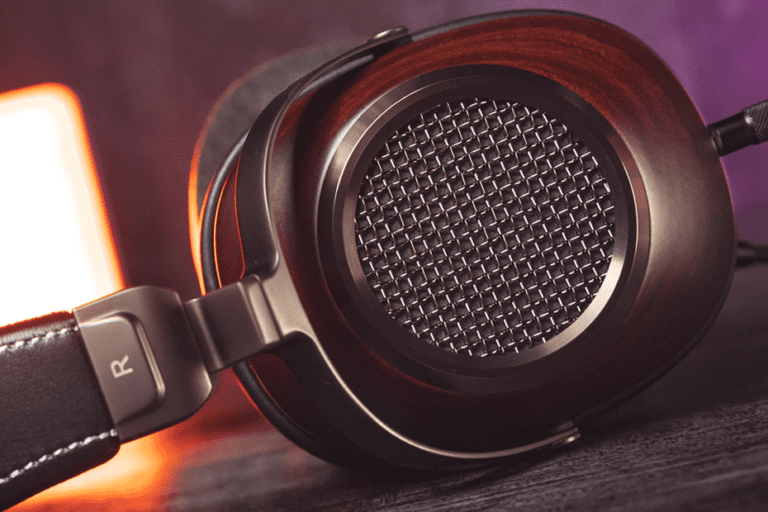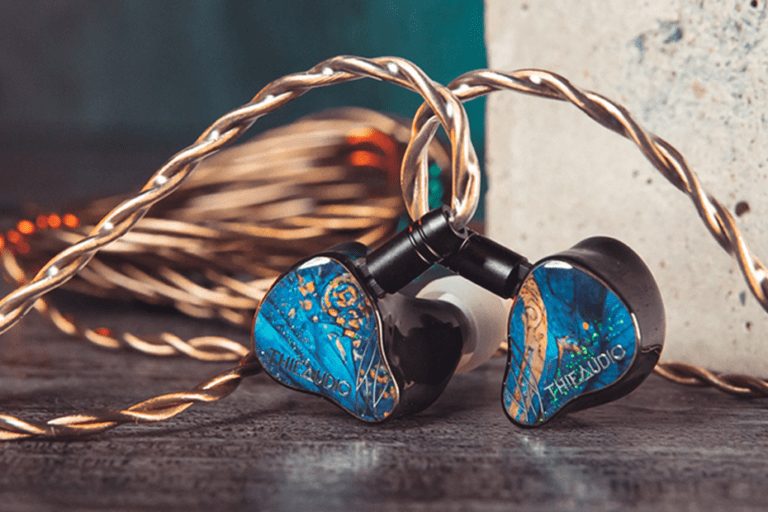Today we are taking a look at the brand new Periodic Audio Rhodium portable DAC/AMP. Find out all about their performance, now on Kinemoss Tech!
Disclaimer: This sample was sent to me by Periodic Audio in exchange for my honest review. No one paid me to say anything in particular about this product. All thoughts and opinions in today’s episode are my own.
Periodic Audio was founded in 2016 and is led by a highly professional team who have a broad experience in electronic, mechanical, firmware, acoustical, and industrial design. Periodic Audio puts a lot of time and effort in R&D. Their products are well designed and are made by and for people who love the audio quality. And this is really important. Also their products are assembled in USA.
Periodic Audio Rhodium arrived in a small carton box that looks like a vacuum tube box.
In the box:
- Periodic Audio Rhodium portable DAC/AMP
- and USB Type-C to type-A adapter
🛒 Periodic Audio Rhodium on Amazon
Technical specifications
Talking about technical specifications, this DAC is based on the lc5686 chip from Realtek. It supports PCM decoding up to 384 kilohertz at 32 bits. However, it doesn’t support either DSD or MQA. The dynamic range of this dongle is 113 dB, the signal-to-noise ratio is 108 dB. The continuous output is 31 milliwatts at 32 ohms per channel. The overall length of the dongle is 117 millimeters, and the cable length is 63 millimeters. The weight of the dongle is 4.4 grams.
Now, a couple of words about supported devices. According to Periodic Audio you can use this device with Android-based phones/tablets, and Windows and macOS-based PCs and notebooks. Also, it’s quite important to know that there is no support for iOS. Unfortunately, I don’t have my camera USB adapter to check it with my iPhone; it’s on the way. So, when it arrives, I’ll do the test. Anyway, it’s clearly stated on the manufacturer’s website that this dongle wasn’t tested with iOS devices.
Use case scenarios
Before we talk about sound signature and sound impressions, let’s first talk about use case scenarios. Generally, there are three main use case scenarios for this DAC.
- If your smartphone or your tablet is not equipped with a 3.5-millimeter headphone output Rhodium can be handy. But you’re not only adding a socket for your headphones; you’re adding quite a high-quality output to your device. This is really important.
- If your PC or your notebook doesn’t have a good sound card, you can easily connect this one with the supplied Type-C to Type-A USB adapter. So you will be able to use it as an external DAC or external sound card.
- If you have an external amp, you can use this DAC/AMP in combination with your external amp. I just used my phone, a simple 3.5-millimeter to double RCA cable and I connected it to my external amp. So generally, those are the main three use case scenarios.
Also, I’d like to add a couple of words about power rating and suggested headphones. Considering it outputs only 31 milliwatts per channel, this device is designed either for in-ear monitors or for sensitive full-size headphones. You need to take this into consideration; this device is not made for power-hungry cans.
Rhodium DAC/AMP sound impressions
As for the sound signature, it’s important to know that all the sound impressions that I’m sharing are completely subjective, so please take them with a grain of salt. If you were to ask me in one sentence how does the Rhodium DAC sound, I would say it’s balanced, slightly warm, and very musical. Yes, that’s exactly how this DAC/AMP sounds to my ears. Overall, it’s quite good; it has a good sound stage, it has good resolution, it’s just a little bit warm.
From my personal experience, I found out that this DAC/AMP pairs really well with neutral and neutral-bright headphones and IEMs. When you’re using it with neutral headphones and IEMs, you make them sound a little bit warmer, engaging and musical. When I was using Rhodium with this dongle with neutral-bright headphones, from one side, they’re becoming a little bit warmer, but at the same time, all the brightness is still in place. So this brightness doesn’t go away, and the sound signature slightly starts to resemble a so-called U-shaped tuning. But it’s important to know that the changes are absolutely minimal, but they are still noticeable if you have a trained ear.
It doesn’t mean that you cannot use this dongle with warm-sounding headphones, the warm-sounding headphones just won’t benefit so much from this dongle as, for example, the neutral-sounding headphones or neutral-bright-sounding headphones.
Enjoying this review? Read more DAC/AMP reviews here
Taking into consideration the power rating of this DAC/AMP, which is 31 milliwatts per channel at 32 ohms, it’s mainly designed for IEMs or sensitive full-size headphones. But also, as I have mentioned earlier, I have tested it with relatively power-hungry cans. So, for the test, I was using three pairs of headphones: Beyerdynamics 250 ohms DT990 Edition, Sennheiser’s 300 ohm HD 6XX, and Hifiman’s 25 ohm HE 400 SE, which at the same time has quite low sensitivity. So, when I was using this pair of headphones with the Rhodium DAC, I was able to reach probably around 1995 of my preferred volume level. But volume level is one thing, and details and low frequencies, for example, and overall presentation is a different thing. So, in this regard, the overall sound on all of the three pairs of headphones was lacking. And this is not surprising because this DAC wasn’t designed to drive power-hungry headphones. But I was just curious to make such a test.
What I will also suggest because of the 32 ohm impedance of the DAC, it will pair well with 32 ohm headphones. So just look through your collection, or maybe you have some headphones in mind that have 32 ohm impedance, and if the headphone is quite sensitive, it can also make a very interesting and good combination with this DAC/AMP.
Conclusions
Alright, let’s summarise what I like about this DAC/AMP. First of all, it’s quite affordable, it has quite a nice form factor, it’s well-built, it’s a small stylish device, and it works really well. What I also like is that you have a few different use scenarios for this device. So you can use it with your tablet, you can use it with your phone, you can use it with your computer. And also, I like the sound signature of this device. To myself, it sounds a little bit warm, but at the same time, it’s very musical. You get a good sound stage, you get good separation of the instruments, you get all the details, and imaging is also good.
Regarding the cons, honestly, I didn’t find any. I tried, but I just couldn’t. There is nothing to dislike about this device, especially at 50 bucks. So if you would like to add a 3.5mm output to your device, whether it’s a tablet or your phone, or for example, you already have a 3.5mm output on your device, but you want better quality, I think that the Rhodium DAC from Periodic Audio should be definitely on your list.
🛒 Periodic Audio Rhodium on Amazon


